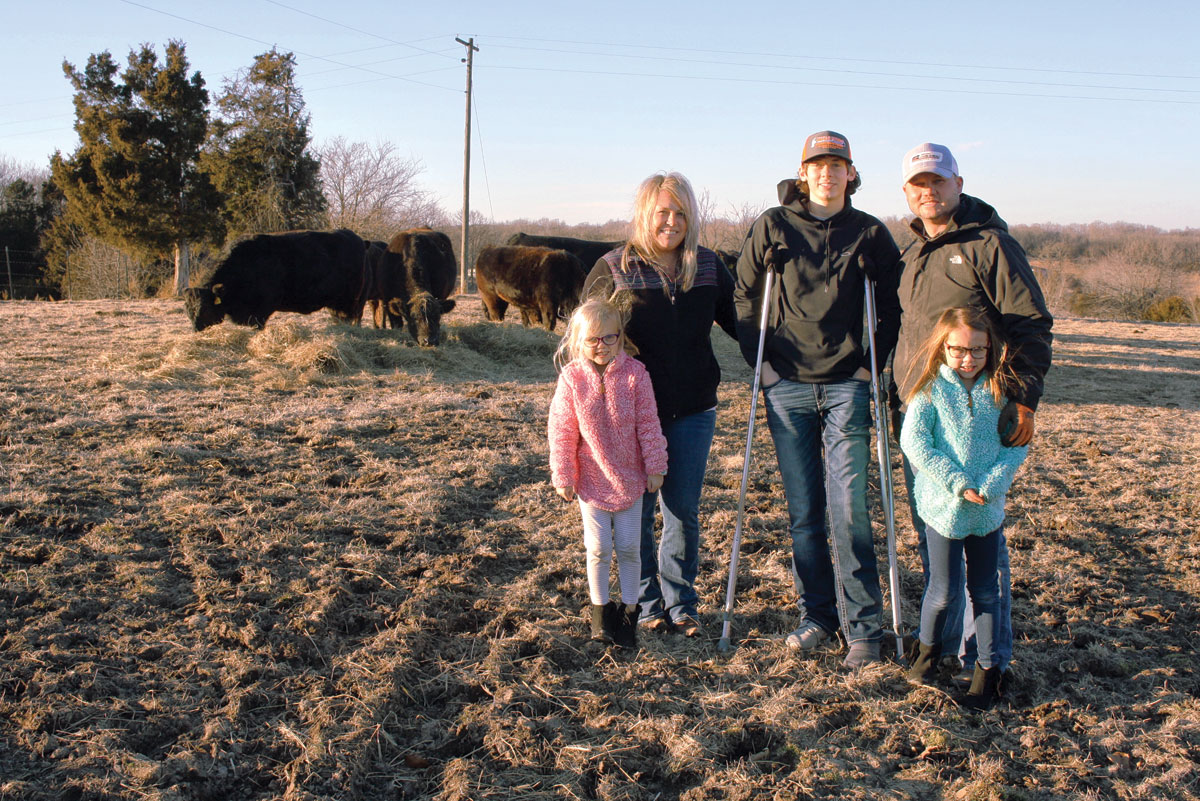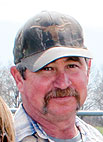
Scott Hedges and his family strive to breed high-quality show cattle at their Richland, Mo., farm
Scott Hedges’ family has been in the cattle business for generations. He fondly recalls the first steer he showed at the age of 9, which was followed the next year by a show heifer purchased for him by his grandfather.
“I was really hooked on showing,” Scott said recently. “I really enjoyed showing and did that through high school. I also got some opportunities to help out some other breeders with shows and sales. I’m not going to say I’m good at it, but I’ve clipped a lot of cattle. I’ve been to the ER because of it a few times for stitches here and there because of it, but I enjoy it.”
Scott, who taught agriculture at Richland High School for a number of years before moving into a career with Farm Bureau, has combined his love of the cattle industry and the show ring by focusing on the development of Limousin and Lim-Flex show prospects.
Scott, his wife Amber, along with son Bryce, 16, and daughters Hayden, 6, and Landree, 5, have a small registered Limousin and Lim-Flex herd on their 20-acre Richland, Mo., farm in Camden County.
Because they have a small herd, Scott said it allows them to focus more on the genetics they like. They currently have 10 registered females and are utilizing genetics developed by Pinegar Limousin.
“When we bought our cows, we tried to seek out the genetics we knew where proven in the breed and known for show quality. Since we are smaller, we focus on the better genetics of the breed… We actually started off buying show heifers for Bryce and bred those heifers for him to get show steers. At the time, I had a farm in Stoutland (Mo.) that I rented and had 30 Limousin cross pairs. We eventually sold those cows, keeping Bryce’s show cows, and then went with the higher genetics.”
Their plans have paid off.
“Bryce has raised two or three show steers out of his cows, and he’s right there at the fairs. When you do that out of something you’ve raised, you take more pride in it,” Scott said. “Even if he doesn’t win grand or reserve champion, when it comes sale time, he can say he didn’t have to spend $1,5000, $2,000 on a steer; it came from our field, from our cow.”
Scott grew up with the Limousin breed, and his parents, Ron and Rhonda Hedges, have raised the breed for a number of years.
“We actually got started with the old red Limousin when Grandpa (Frank Hedges) bought a herd out of Decaturville, Mo. It was about 25 or 30 cows and my dad had been using Limousin bulls on some crossbred cows. I’m a fan of the red cattle because I think they have a place in the market with their growth. When I was in high school, we got more into the black cattle. Lim-Flex wasn’t really a thing then, but we had a half-blood or three-quarters bull that Dad bought. That was the best bull we ever had and I had lots of show calves out of him. Dad still has cows out of that bull.”
Scott said he likes the heavy muscling of the Limousin breed, but the Angus influence into the breed helped correct some of the structural issues.
“It’s done nothing but helped the Limousin breed,” he said. “It’s really helped improve the carcass merit; those cattle grade and marble much better now with that trait. Just having that hybrid vigor is the main thing and we need that for the bottom line because the faster you can get cattle finished, the better it is for everybody.”
Because the family concentrates on show-quality cattle, calves that don’t appeal to them are sold as feeder calves.
“If we don’t think they are good enough to be in our barn, then I’m not going to market it as a show prospect. We’ve got some bull calves now that I think will make good bull prospects and we’ll keep them up as possible herd sires.”
Amber, who grew up in the Kansas City, Mo., added that disposition is also a culling factor.
“If they can’t handle things like the noise of the kids splashing around in the pool and playing, they aren’t kept,” she said.
The Hedges herd is split into fall and spring calving, and they are currently utilizing natural cover with a registered Lim-Flex bull.
“At some point, I’d like to retain some of our heifers and get into an AI program with them. Our bull will eventually have to go down the road, and these cows are going to have to be replaced, but I love these genetics. We’re hitting licks that are really starting to work,” Scott said.
While they are breeding for show animals, they also want animals that will produce high-quality calves.
“We look at EPDs, but we also relate it to what her momma is doing,” Scott said. “We want to look at those maternal traits. I’m still a phenol-typical kind of guy; I like pretty cattle and I like them to have an eye appeal. For us to keep a heifer, she has to be a show heifer, but she’s also got to be a cow. She’s got to be deep ribbed, she’s got to be sound and she’s got to have the ability to raise a good calf. We’ve tried to select cattle that have proven genetics toward milkabily and growth, and that have that eye appeal; kind of the best of both worlds. Some people are either a numbers game or just show cattle, I want cattle that we can make a show calf out of or make a cow or a bull out of a show calf.”
Because they are limited to 20 acres, Scott said pasture management is critical.
“We’re lucky that we can grow grass,” he said. “I do put down fertilizer, soil test, spray for weeds; I do have to manage it. It’s busted up into three different sections and rotate as much as I can. The cattle are in good shape and we keep free choice mineral out for them year round, and we vaccinate and worm twice a year.”
Because the acreage is dedicated to pasture land, Scott said they must buy hay each year, opting to stick with hay produced locally.
As for what the future holds, Scott said he would like to have more cows, more land and become more of a seed stock producer.
“Right now, with our limited space, we’re just growing our own show cattle, but I’d like to be to a point where I have 10 bulls in the lot and be a seed stock producer, not just a show calf or feeder calf producer. For us, it’s going to take more space and more cattle to do that.”






